Torpedo bomber Grumman TBF: I will bring you your death, samurai ...
Yes, it turned out a kind of large-scale transition in the cycle from the European theater of operations to the Pacific Ocean. But what to do in our stories the war in the Pacific was not given due attention, and the cuts were at sea and in the air were terrible.
Our today's participant was born just before the war, in 1939, when the United States took, and very seriously, for the rearmament of the sea aviation. It was assumed that the frankly outdated aircraft will be replaced by a new generation of sea-based aircraft F4U "Corsair", F6F "Hellket" and SB2C "Helldiver".
But it turned out with a rearmament completely not as planned, and the 1941 year the American naval aviation met in about the same way as the Red Army Air Force. That is, in some “process of rearmament,” that is, in complete discord.
But with regards to the torpedo bombers, one thing has definitely become clear: the Douglas TBD-1 “Devastator” must be sent to rest, because it’s definitely everything.
And at the end of 1939, the US Navy strained aviation companies with an order for a new torpedo bomber. The requirements were very acceptable for that time: a crew of three people, a maximum speed of 480 km / h. Armament of one torpedo or three bombs of 500 pounds must be placed inside the fuselage, the plane had to have self-tightening fuel tanks, armor, and a turret with defensive weapons on a servo drive.
There were many offers, but the fleet I liked only two projects, from “Voot” and “Grumman”. These prototypes were built and handed over for testing.
In general, the “Grumman” until that time did not make either bombers or torpedo bombers, but was the main supplier of fighter jets for the fleet, from FF-1 to F4F Wildket. It is probably not surprising that the torpedo bomber acquired some features of the F4F family. Such a fat man with an air-cooled engine and a rather thick belly where weapons were hidden.
The fuselage turned out to be high, but there was enough space in it for everything from the bomb bay to the lower rear defensive rifle point immediately after it. The internal bomb bay was a novelty for naval bombers, but the Grumman plane even exceeded the requirements put forward by the US Navy: it could accommodate a torpedo weighing 2000 pounds or four 500-pound bombs.
The crew of three people: pilot, radio operator and gunner. All were located in a long cabin, closed by a lantern. At the end of the cockpit was an electric Olsen rifle turret.
The Olsen rifle turret was a very interesting construction. She, in fact, was a separate module with weapons, controls and ammunition, sheathed in a spherical plexiglass cap in the rear of the cockpit. Yes, there was also a shooter in the turret kit.
The shooter was armed with the familiar 12,7 mm Browning and was sitting in an armored chair, protected by half-inch thick armor plates mounted in front of the turret and on its sides, as well as an inch armor plate under the armchair and a half-inch thick panel made of armored glass directly in front of him.
The turret was controlled by one handle-joystick horizontally and height, and on the handle was a machine gun trigger drive. The turret was powered by electric motors powered by the onboard network of the aircraft.
The rest of the mechanization, the mechanism for cleaning the landing gear, folding the outer wing consoles, flaps and opening the flaps of the bomb bay - everything was powered by hydraulics.
The Grumman company designed the wings of the aircraft so that they folded, turning back, and occupied a position on the sides of the fuselage parallel to it. This was done in order to solve the problem of the insufficient height of the hangar decks of aircraft carriers, where a rather high plane had to be shoved.
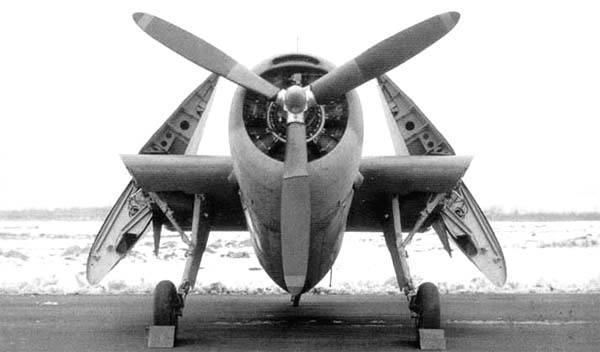
Thanks to the hydraulic drive, the wings could be removed or spread out by the pilot himself in just a few seconds, and this did not require any assistance from ground personnel. By the way, this became one of the components of the Grumman victory in the competition.
Another useful factor was that, as a bomber, the Grumman could even dive. Not like a normal dive bomber, but pretty well. The role of air brakes was pretty well played by the landing gear, which in the released state reduced speed to 300 km / h.
The aircraft successfully passed all the tests and was launched into series. Since the end of the tests fell on the time following the attack on Pearl Harbor, the plane was given the name Avenger.
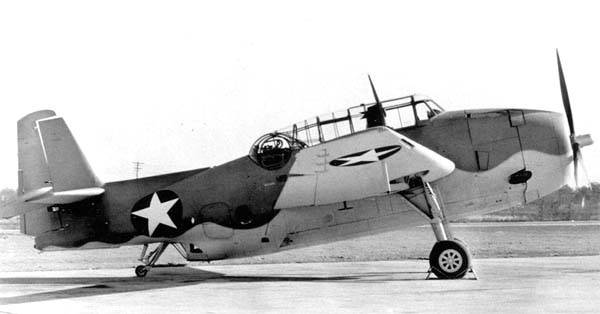
The first production TBF-1 left the assembly line on January 3, 1942 and January 30, after completion of factory tests and acceptance flights, the aircraft was officially handed over to the US Navy.
By the way, Avenger was one of the first aircraft to receive radar. The radar began to be installed on the Avenger in the first year of its production. Yagi air-to-surface type B (ASB) radar antennas were mounted under each wing on its external panels. The radar equipment itself was installed in the radio operator’s compartment, the ASB radar was the standard radar that supplied all versions of the Avengers.
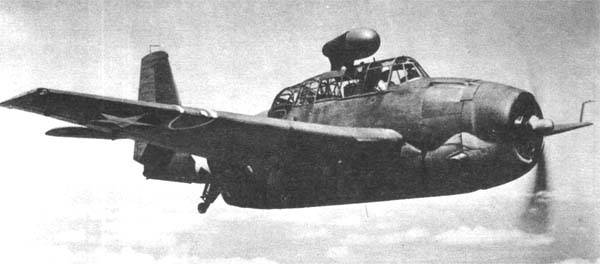
The first combat use of the Avengers is by no means successful. Of the first 21 crews based at Pearl Harbor, six were selected and sent to Midway, over which the threat of a Japanese offensive loomed. Volunteers went to Midway, although in general all members of the twenty-one crew expressed their willingness to fly to Midway.
On June 4, 1942, shortly after dawn, the Catalina flying boat discovered a Japanese invasion fleet bound for Midway.
At 05.45, six TBF-1s armed with torpedoes took to the air and headed for Japanese ships. The targets were discovered at around 7 a.m., and the Avengers launched an attack on the invasion fleet.
It is regrettable, but the attack by torpedo bombers was foiled by a fighter patrol from a Japanese aircraft carrier. The Avengers, who did not have fighter cover, dived to the water and continued flying towards enemy ships on a low-level flight, but 5 of 6 aircraft were shot down by the A6M2 Zero and were not even able to drop torpedoes.
Given this, the combat debut of the Avengers cannot be called successful. However, within two months, all American aircraft carriers that had torpedo-bearing squadrons received the Avengers, and the Devastators were decommissioned.
So the Avengers began their service in the Navy, but at the same time problems began. By the end of 1942, “Grumman” produced 60 cars a month at its plants, but given the intense fighting in the Pacific Ocean, the fleet demanded more aircraft to be replaced by a downed and badly damaged one.
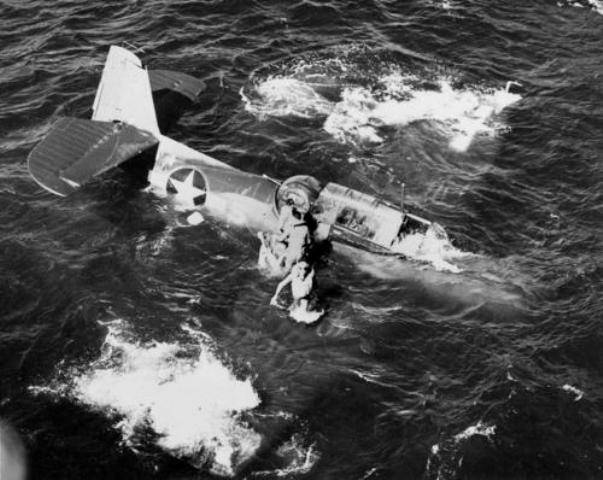
But Grumman simply couldn’t produce more, the company, in addition to Avengers, was heavily loaded with F4F Wildket production and was preparing to switch to the next-generation marine fighter, the F6F Hellket.
In this regard, an interesting decision was made: to find a subcontractor for the release of torpedo bombers.
The choice fell on ... General Motors, which by that time had significantly reduced the production of cars and closed several plants. That is, there was enough production space.
Probably, the GM leadership was very surprised when the leadership of the US Navy arranged a meeting with Grumman regarding aircraft production.
As a result, the Eastern Aviation Branch of General Motors was organized, which eventually engaged in the production of aircraft. The Eastern Aviation Branch produced TVM-1 Avenger, and Grumman produced TBF-1 Avenger, the planes were absolutely identical, and they could be distinguished only by comparing the serial numbers. All the difference was only in the numbers and letters of the name.
By 1945, the Eastern Aviation Branch reached a phenomenal rate of 350 aircraft per month. March 1945 was the record month for TVM production, when the Eastern Aviation Branch built 400 aircraft in thirty days.
Grumman eventually switched to the production of the F6F Hellket fighter jets, and from December 1943 the Vostochny branch became the sole manufacturer of the Avengers. Before the end of the war, the branch manufactured a total of 7546 TVMs, or 77% percent of all Avengers produced.
So, the Avengers began to fight. And the very first battles showed that with the armament of the torpedo bomber, to put it mildly, not very. It was originally not very: in the turret of Olsen a 12,7-mm machine gun, firing back, and under the hood of the engine there was a synchronized 7,62-mm machine gun.
The Japanese quickly realized this and began to easily go into frontal attacks. Given that the samurai did this very calmly, the Americans started in real trouble.
The solution was found by engineers from the 10th torpedo squadron (VT-10), who in the field were able to install a 12,7-mm machine gun with ammunition and a synchronizing mechanism outside on the root of each wing of the aircraft.
This field modification turned out to be quite successful, and the drawings of this project were sent to the Grumman design department. There, the project of military engineers was improved as follows. that machine guns began to be installed inside each wing, outside the area swept by the propeller, which made it possible to do without synchronizers.
7,62 mm machine gun from under the hood removed.
The second, which required refinement, turned out to be a torpedo. The standard American naval aviation torpedo, Mk 13, was too slow and unreliable, which is why the Avengers attacks often failed due to the failure of the torpedoes. Plus, the low speed of the torpedo allowed enemy ships to perform evasion maneuvers.
Repeated improvements were carried out, which basically boiled down to increasing the height of the torpedo’s discharge and the flight speed during the discharge, which was already an achievement, since it greatly increased the chances of survival of the crew of the torpedo bombers.
But the Avengers were very often used as ordinary bombers. The rather large torpedo bomb bay fit perfectly both the 2000-pound (900 kg) General Purpose bomb and the 1600-pound (725 kg) Armor Percing armor-piercing bomb. It was possible to use bombs of smaller caliber.
When attacking a maneuvering ship, the Avengers tactics consisted of dropping a “pack” of up to four bombs using an intervalometer, a device that controlled the time interval between dropping bombs.
The intervalometer control panel was installed in the radio operator’s compartment and on it the radio operator manually set the Avenger flight speed and the required interval between the dropping of bombs.
The target was attacked in a dive at an angle of 30 to 45 degrees, to a height of 500 feet or lower.
The pilot dropped bombs at the peak exit and, thanks to the intervalometer, the bombs hit the target at intervals of 60 to 75 feet, which practically guaranteed one or more hits on the target when dropping a “pack” of four bombs. This tactic proved to be highly effective, and the Avengers earned a reputation as a very well-aimed bomber aircraft.
The Avenger also took place as an anti-submarine aircraft. I had to use them as a PLO plane, since the Doenitz guys really got the British allies, and really had to do something with submarines, because only in February 1943, German submarines sent more than 600 tons of displacement to the bottom of ships.
Often, Doenitz's submariners went so far into the ocean that the base patrol planes could not get them. Then the Avengers, along with the Wildcat, registered on the decks of escort (converted from bulk carriers mainly) aircraft carriers.
With a large range and the ability to carry four depth bombs of 350 pounds in the bomb bay, the Avenger proved to be a highly effective anti-submarine aircraft.
In 1943, attempts began to equip the Avenger with the ASD-1 radar. To do this, a parabolic dish was placed on a plane in a fairing mounted on the front edge of the right wing. The ASD radar was capable of detecting both ground and air targets at a much greater distance than the old ASB radars could.
In addition to the ASD-1 radar fairing installed, the TBF / TBM-1D series carried additional yagi radar antennas mounted on each wing, immediately behind the main landing gear struts.
There was also an interesting field modification, "Night Owl." These were night submarine hunters. Since submarines usually surfaced at night to charge batteries, it was also easier to search for them at night.
Such aircraft were dismantled rifle turret, wing machine guns and all reservations. Additional fuel tanks were installed in the fuselage and bomb bay, which significantly increased the flight duration of these Avengers.
The crew of the Night Owl consisted of a pilot and a radar operator, the Owl could take off at sunset and fly over the sea all night. If the crew of the Owl found a submarine, then a normal plane was pointed at her by radio.
The tactics turned out to be very successful, and by the time the war ended, 14 aircraft carrier anti-submarine groups operating in the Atlantic had sunk a total of 53 German submarines and captured one - U-505. In the Pacific, successes were more modest, where 8 anti-submarine groups on escort aircraft carriers sank 11 Japanese submarines.
Avenger also worked in the Royal Air Force. 958 cars of all modifications were delivered to the UK under the Lend-Lease. The British called the aircraft “Tarpon / Avenger Mk I” until 1944, when the “Tarpons” were renamed “Avangers”, so as not to cause confusion in the joint actions of the allies in the Pacific Ocean.
Numerous experiments were conducted with the Avenger to equip it with radar equipment. When the Grumman specialists managed to push the APS-20 radar into the bow and arrange TWO (!) Places for the operators in the radio operator’s place (removing the rifle turret and making a huge flashlight), the TVM-3W turned out, in fact, an aircraft of early location detection, which allowed “See” even airplanes flying at low altitude at an altitude of 100-150 meters.
In this role, the Avengers served in the US Navy until the mid-50s.
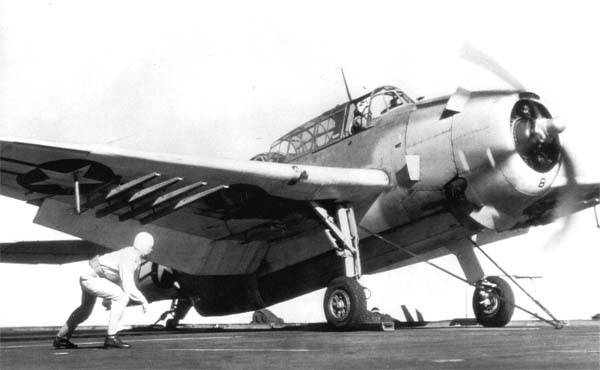
In the campaign in the Pacific, Avengers first seriously proved themselves in the battle of the Solomon Islands, when the Ryudze aircraft carrier was hit by torpedoes (at least one, a maximum of three) from the Avengers to the engine room. Then he was finished off with bombs, which left the Japanese squadron (stronger in composition) without air cover. The Americans were able to retreat, and the Japanese, fearing air raids during the day, did not actively pursue.
On November 8, 1942, a naval battle took place in the Guadalcanal area with a Japanese squadron landing troops on an island in which the Americans lost two light cruisers and four destroyers. The losses of the Japanese were much more modest, two destroyers, and the battlecruiser Hiei, who tried to leave the battlefield and go into repair, was seriously damaged by shells and bombs, but a torpedo to the engine room slowed it down very much.
The next morning, nine Avengers from the Enterprise aircraft carrier caught up with the cruiser and sent it to the bottom. A little later, on November 14, another group of Avengers planted four torpedoes in the Kinugas heavy cruiser, which was more than enough for the ship to drown.
During the battle in the Philippine Sea (June 19-24, 1944), 194 Avengers were on the decks of American aircraft carriers (seven shock and eight escort). During this operation, they took part in the sinking of the Hayo aircraft carrier and severely damaged the Chiyoda and Zuykaku aircraft carriers. However, this time the Everngers worked as bombers, with 227 kg bombs instead of torpedoes. The operation can hardly be called successful, since the loss of aircraft in total exceeded 200 aircraft.
But on October 24, 1944, the Avenger torpedoes played a decisive role in the sinking of the Musashi superlinkor. 19 torpedoes - and the beauty and pride of the Japanese fleet rested at a kilometer deep in the Sibuyan Sea.
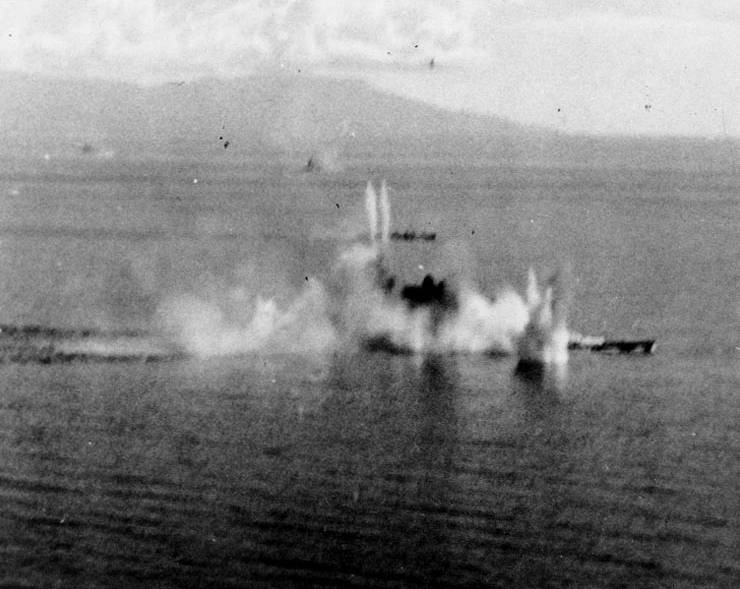
Why torpedoes? Because the bombs could not do any serious damage to the superbly armored giant. In the same battle, about two dozen bombs fell into the Yamato, and could not do anything besides minor damage.
Indeed, a large ship, if not a large torpedo, then a large number of ordinary ones.
As happened on April 7, 1945 with the Yamato. 10 torpedoes is 10 torpedoes, and the flagship of the Japanese fleet has gone after history with the sistership ...
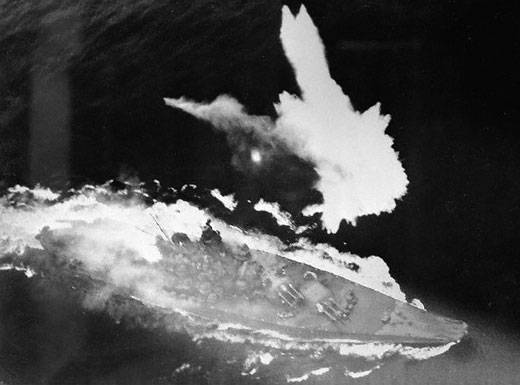
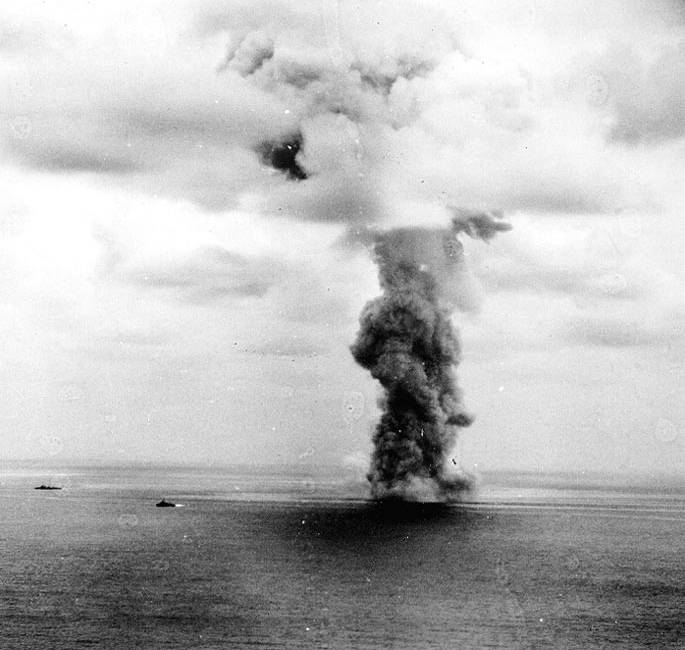
In general, with varying degrees of success, the Avengers fought the entire war in all theaters of war. The Pacific Ocean, the Atlantic, the Mediterranean, even the North, where two squadrons hunted (albeit unsuccessfully) for the Tirpitz. In short, where the British and American aircraft carriers swam, there were the Evenings.
In general, a very balanced aircraft was obtained, with practically no weak points. And very strong one.
Its versatility has become the key to long service. Although he quickly left the arena as a torpedo bomber, he served for a very long time as a radar detection and fire-fighting aircraft.
Well, in the end, one cannot fail to mention the incident, which still excites the minds, the main characters of which were “Avengers”. It is clear, probably, that we are talking about the incident of December 5, 1945 in the Bermuda Triangle.
On this day, five crews were supposed to perform a routine training flight from Fort Lauderdale.
The lead aircraft was controlled by an experienced pilot, Lieutenant Charles Taylor, but the other crews did not have experience flying over the sea. At the appointed time, the aircraft did not return to base. It was only received a radio message from the pilots, which spoke of their loss of orientation. A rescue operation was undertaken, which, however, did not bring any result. In addition, one of the flying boats that took part in it, the Martin Mariner, disappeared during its course.
The mystery of the disappearance of aircraft has remained unsolved until now, but everything indicates that the cause was severe weather conditions in the vicinity of the flight path and a magnetic storm that could lead to the failure of on-board devices. Under such conditions, airplanes could easily crash into the surface of the ocean and drown. Although many still consider supernatural phenomena to be the cause of the death of aircraft, there is nothing to be done about it.
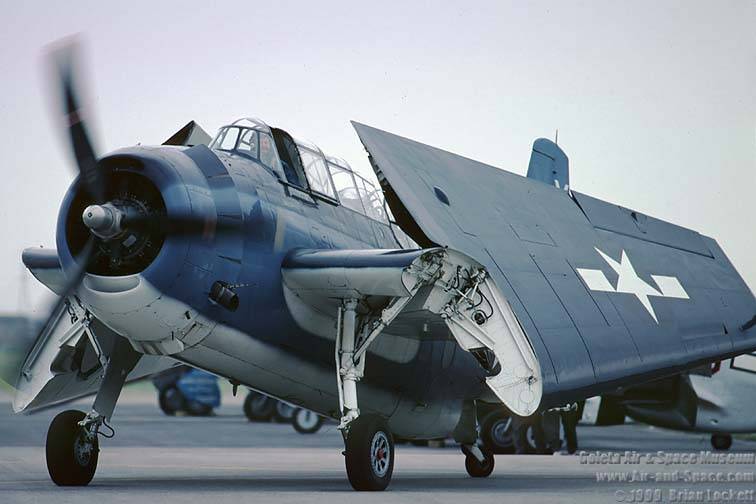
LTX modification of TBM-3
Wingspan, m: 16,51
Length, m: 12,16
Height, m: 5,02
Wing area, sq.m: 45,52
Weight, kg:
- empty aircraft: 4 913
- normal takeoff: 7 609
- Maximum takeoff: 8286
Engine: 1 x Wright R-2600-20 Cyclone 14 x 1900 hp
Maximum speed km / h
- at height: 444
- by the ground: 404
Cruising speed, km / h: 243
Practical range, km: 1 626
Speed, m / min: 630
Practical ceiling, m: 7090
Crew, prs: 3
Armament:
- two 12,7 mm machine gun wing, one 12,7 mm machine gun in the dorsal fuselage and one 7,62 mm machine gun in the fuselage position;
- up to 907 kg of weapons in the bomb bay and attachment points for NURS, drop tanks or container with a radar or machine guns under the wing.
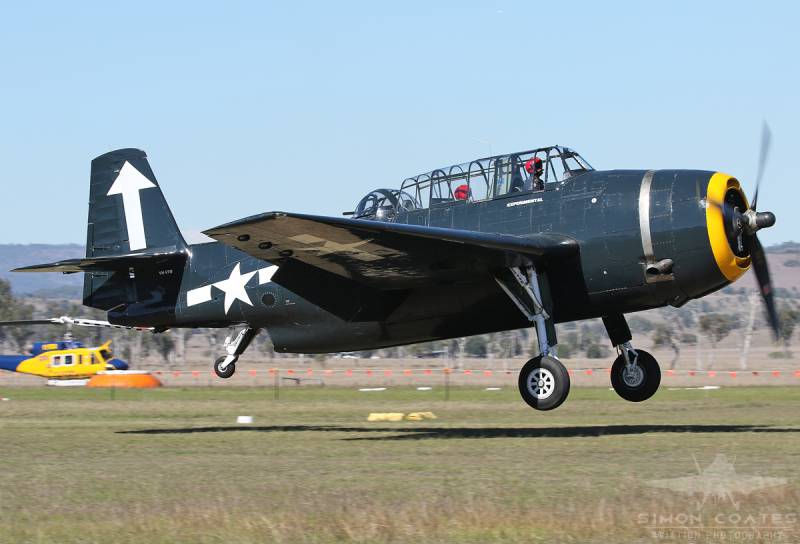
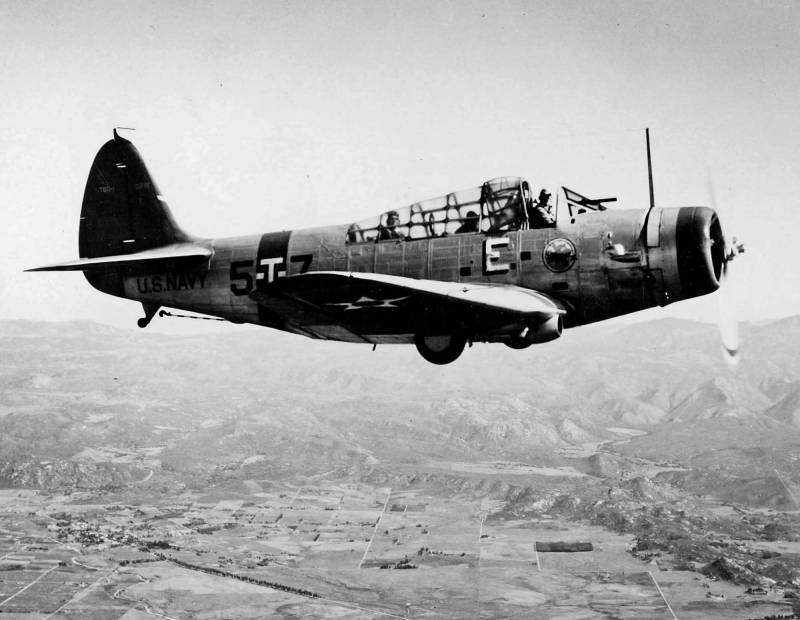
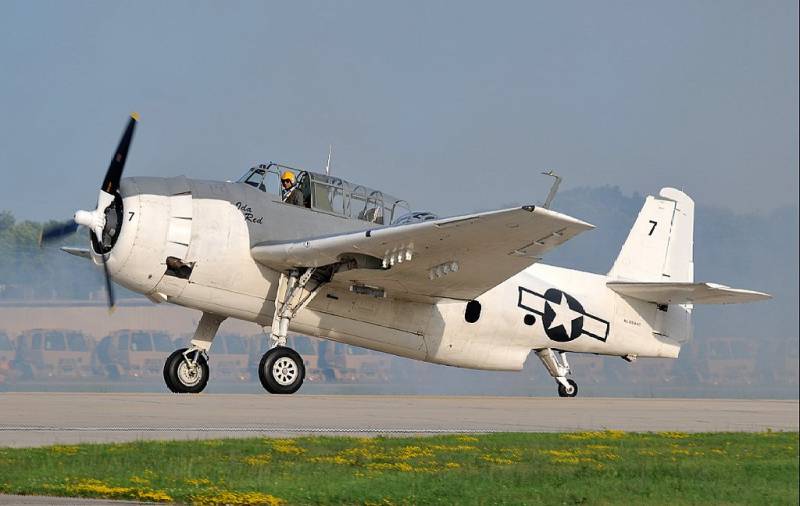
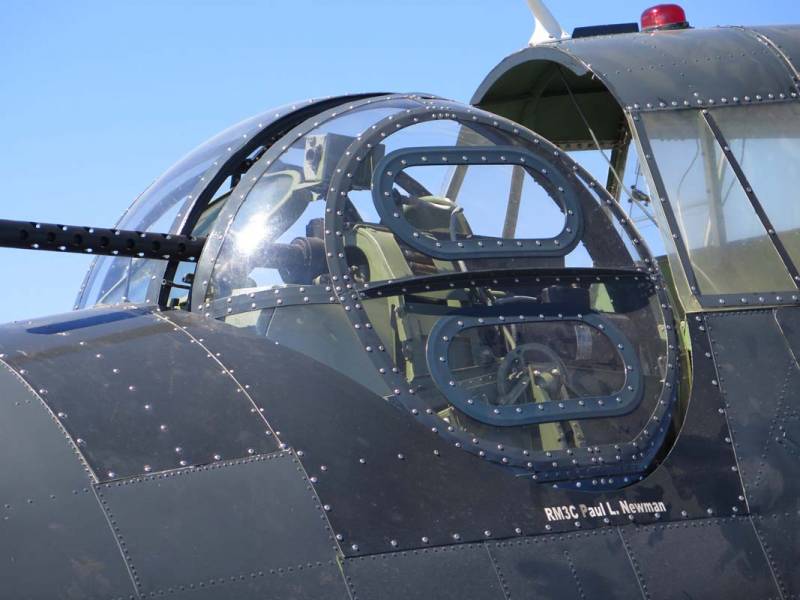
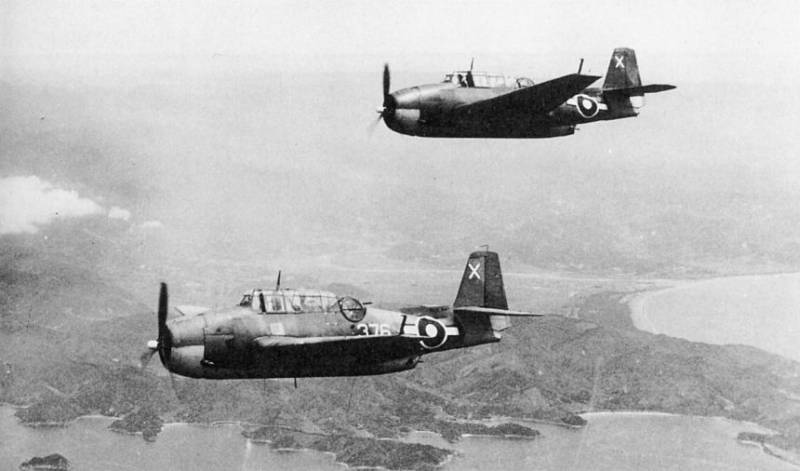
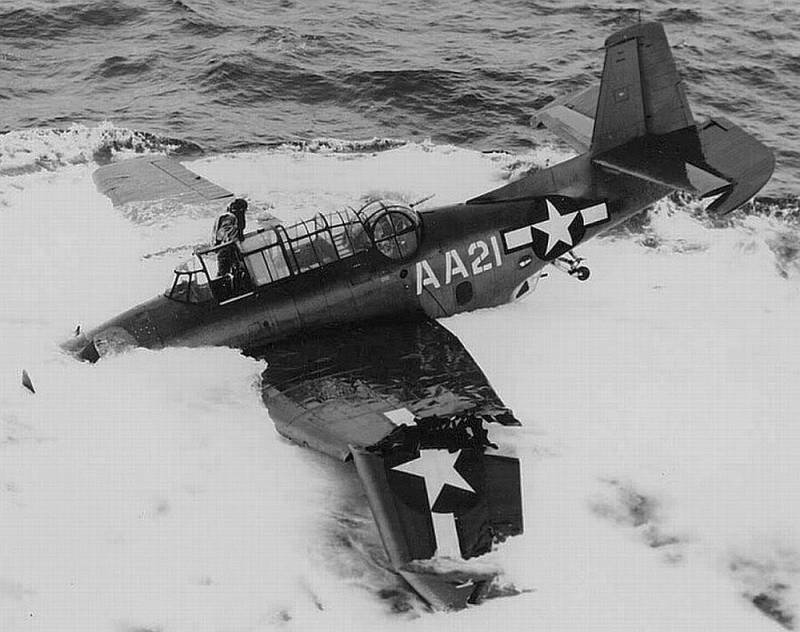
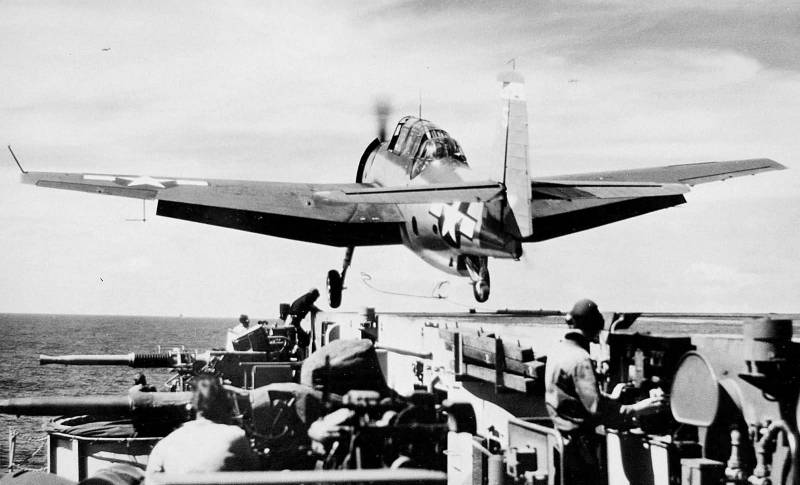
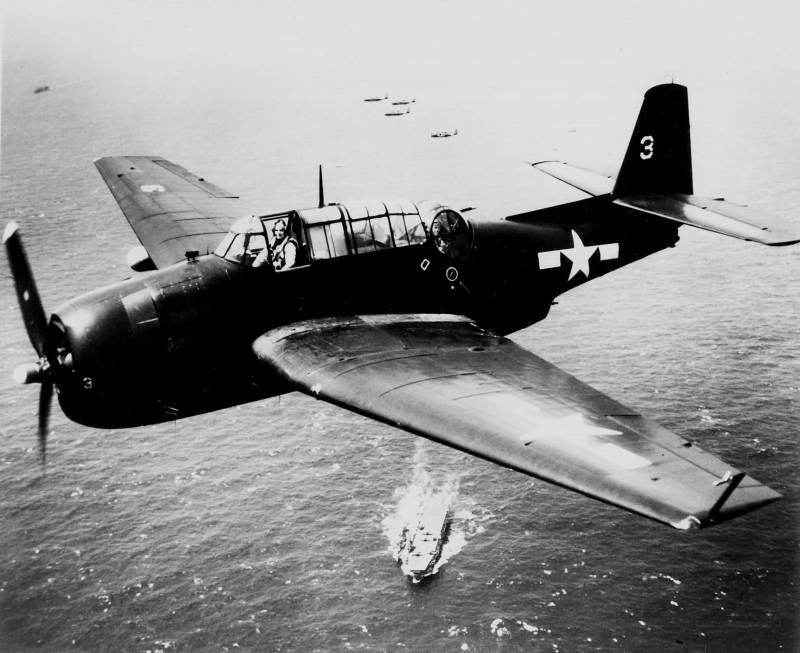
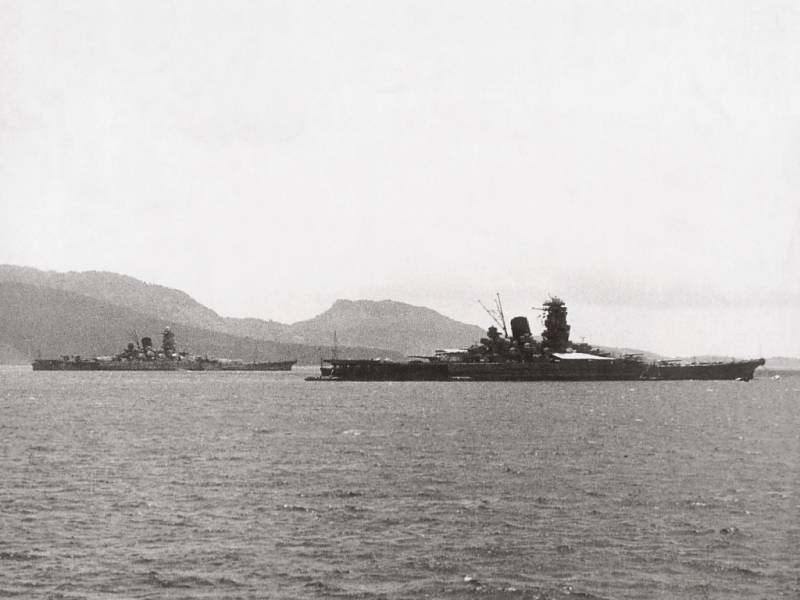
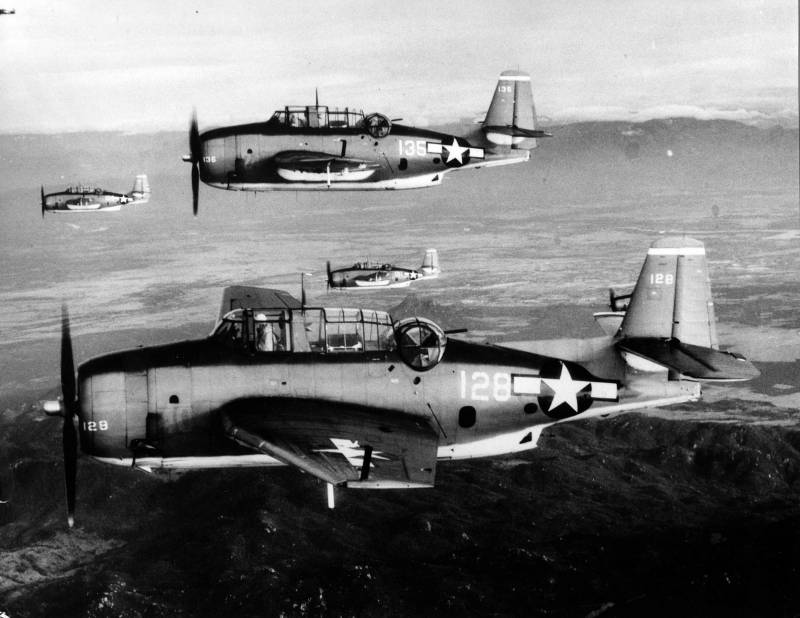
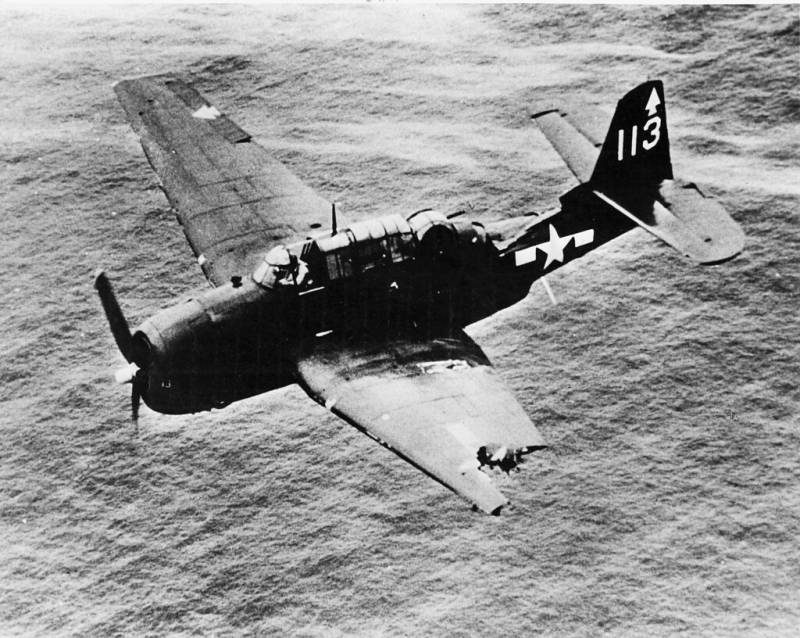
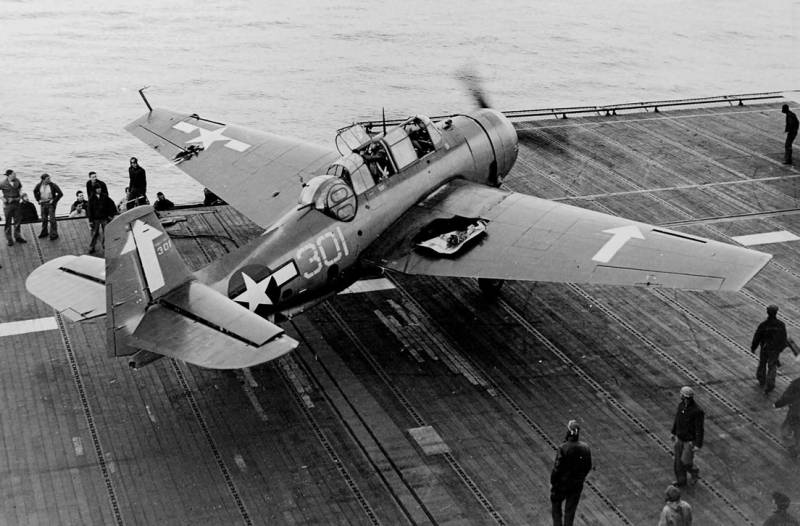

Information